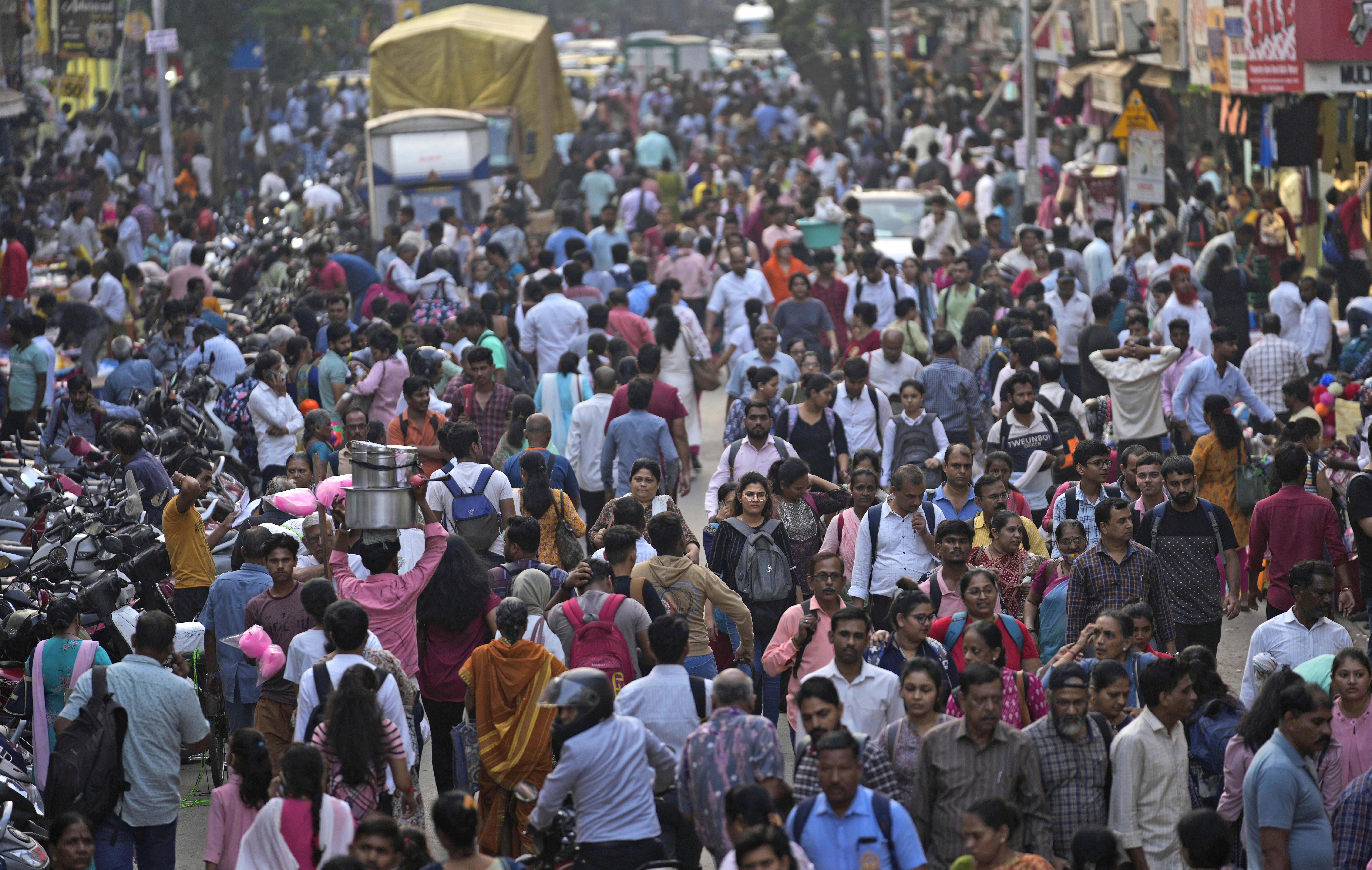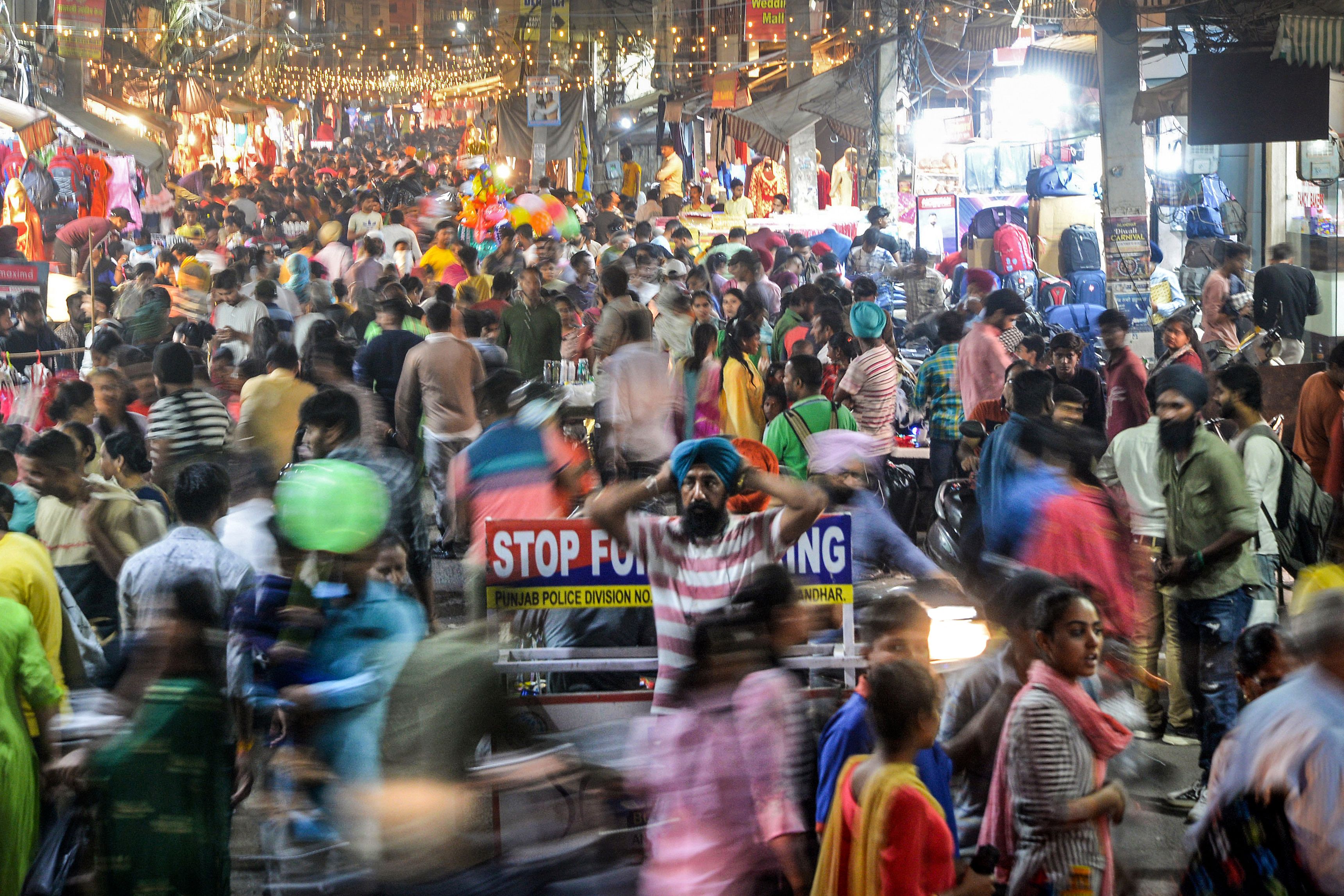India on its way to becoming world’s most populous country overtaking China in 2023, UN says
Previous reports say China’s population last year fell for first time in 60 years

Your support helps us to tell the story
From reproductive rights to climate change to Big Tech, The Independent is on the ground when the story is developing. Whether it's investigating the financials of Elon Musk's pro-Trump PAC or producing our latest documentary, 'The A Word', which shines a light on the American women fighting for reproductive rights, we know how important it is to parse out the facts from the messaging.
At such a critical moment in US history, we need reporters on the ground. Your donation allows us to keep sending journalists to speak to both sides of the story.
The Independent is trusted by Americans across the entire political spectrum. And unlike many other quality news outlets, we choose not to lock Americans out of our reporting and analysis with paywalls. We believe quality journalism should be available to everyone, paid for by those who can afford it.
Your support makes all the difference.India will overtake China to become the world’s most populous country by mid-2023, according to UN data.
India’s population will increase by nearly three million more than China by the middle of the year, as per demographic data from the UN Population Fund’s (UNFPA) State of World Population Report, 2023.
The populations are estimated to be at 1.4286 billion for India against 1.4257 billion for China by the middile of the year.
“The Indian survey findings suggest that population anxieties have seeped into large portions of the general public,” Andrea Wojnar, a representative for UNFPA India, said in a statement.
“Yet, population numbers should not trigger anxiety or create alarm. Instead, they should be seen as a symbol of progress, development and aspirations if individual rights and choices are being upheld.”
According to the report, New Delhi is the most populated city in India, with 30 million inhabitants. Delhi is followed by India’s financial hub Mumbai, with 20 million. Eastern Kolkata city has 15 million inhabitants, while tech hub Bengaluru has 12 million residents, as per the report.
The 2023 data shows the US comes in a distant third after India and China, with an estimated 340 million population. The data reflects information available as of February 2023, according to the report.
UN population officials have said it was not possible to specify a date due to “uncertainty” about the data coming out of India and China, especially since India’s last census was conducted in 2011 and the next one which was due in 2021 was delayed because of the Covid pandemic.
Earlier this year, it was reported that China’s population fell for the first time in more than 60 years.
The country had 1.41175 billion people at the end of 2022, compared to 1.41260 billion a year earlier, the country’s National Bureau of Statistics said. That means a fall of 850,000 people in a first since 1961.

In the long term, UN experts see China’s population shrinking by 109 million by 2050 – more than triple the decline of their previous forecast in 2019.
This will mean a shrinking labour force and a greater burden on healthcare and other social security costs.
“The young people have a great potential to contribute to the economy,” Poonam Muttreja, the executive director of non-profit Population Foundation of India, told The New York Times.
“But for them to do that requires the country to make investments in not just education but health, nutrition and skilling for employability.”
Even though India is on the cusp of overtaking China as the world’s most populated country, the number of Indian women in the workforce is among the 20 lowest in the world.
“In terms of education, employment, digital access and various other parameters, girls and women do not have equal access to life-empowering tools and means as the boys and men have,” Ms Muttreja said.
“This needs to change for India to truly reap the demographic dividend.”



Join our commenting forum
Join thought-provoking conversations, follow other Independent readers and see their replies
Comments